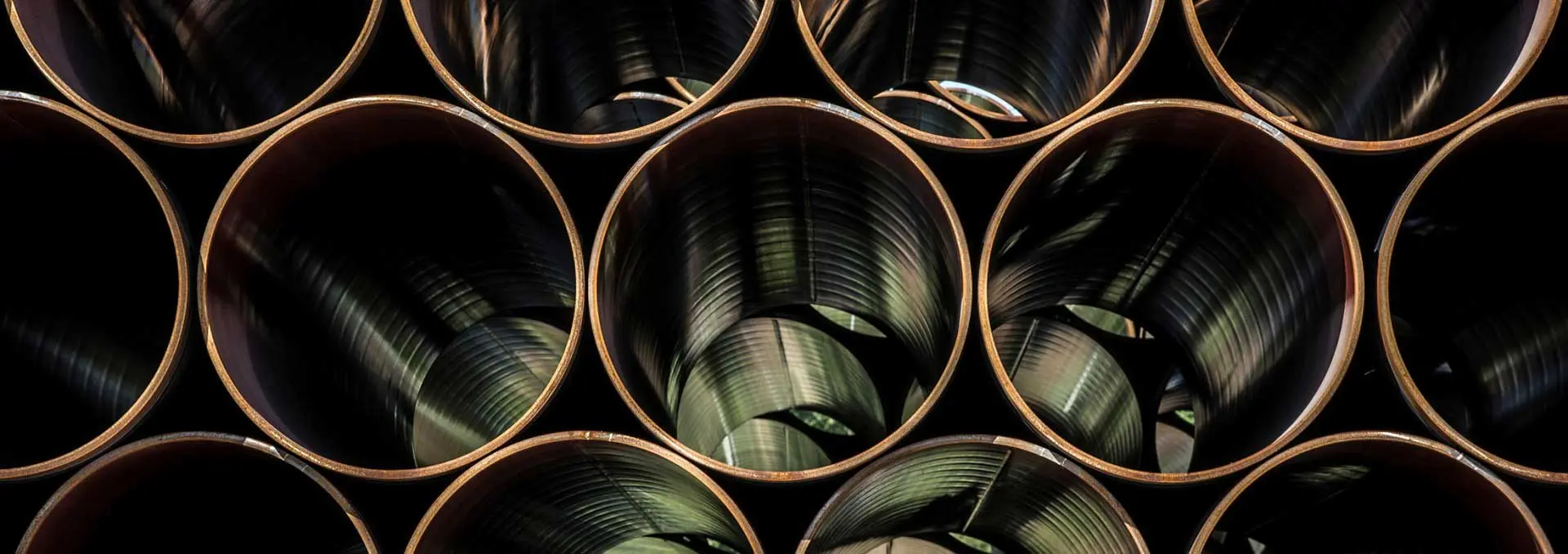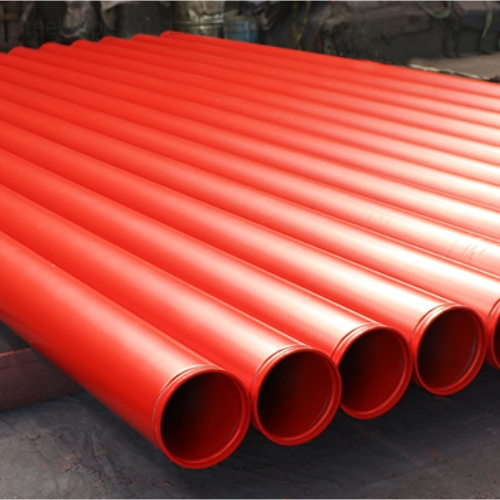- Hydrotest of ASTM A795 Grade B Pipes
According to the standard, each length of ASTM A795 Grade B pipe must be subjected to a hydrostatic test by the manufacturer. The hydrostatic test is a pressure test that checks for leaks in the pipe wall. The test pressure is specified in the Dimension & Size table above. The manufacturer may choose to test at a higher pressure if they wish. The hydrostatic test may be applied to pipe with plain ends, with threads only, or with threads and couplings. It can be applied to single or multiple lengths of pipe. The hydrostatic test must be applied without any leakage through the pipe wall. This ensures that each length of pipe meets the required standards.
- Nondestructive Electric Test of ASTM A795 Grade B Pipes
According to ASTM A795, the standard for black and hot-dipped zinc-coated (galvanized) welded and seamless steel pipe for fire protection use, an alternative to the hydrostatic test is the nondestructive electric test. This type of test uses an electric current to detect any defects in the pipe that may not be visible to the naked eye. If the buyer accepts this type of testing, each pipe must be tested individually. The benefits of using a nondestructive electric test include being able to test a larger number of pipes in a shorter amount of time and being able to detect any defects that may not be visible to the naked eye.
- Flattening Test of ASTM A795 Grade B Pipes
To ensure the safety of pipes, the standard requires a flattening test to be performed on ASTM A795 Grade B pipes. This test is used to assess the ductility of the weld, as well as the pipe itself. The specimen is placed between two plates and flattened in 3 steps.
1. The first test is for ductility, which measures the ability of the weld to stretch without breaking. The pipe is placed between two plates, and the distance between the plates is gradually decreased. If no cracks or breaks occur on either the inside or outside surfaces of the pipe before the distance between the plates is less than two-thirds of the original outside diameter, then the weld is deemed ductile.
2. The second test is for ductility exclusive of the weld, which means that no cracks or breaks can occur on the inside or outside surfaces until the distance between the plates is less than one-third of the original outside diameter. However, this distance must be no less than five times the wall thickness of the pipe. If any evidence of laminated or unsound material is revealed during this test, then the weld is rejected.
3. Finally, a soundness test is conducted to assess whether there are any defects in the weld. The pipe is again placed between two plates, and the flattening process is continued until the specimen breaks or until the opposite walls of the pipe meet. Any evidence of incomplete welds will result in rejection.

 English
English Español
Español




 Tel : +86-18565811709
Tel : +86-18565811709 Email :
Email : 







